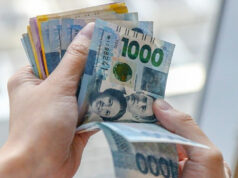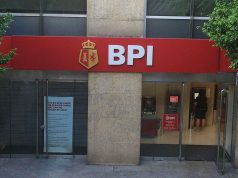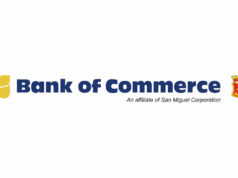Banks tap BSP rediscount window
BANKS CONTINUED to tap the central bank’s rediscount window in April in a bid to boost liquidity during the lockdown.
Peso rediscount loans totaled P13.842 billion in April, data released by the Bangko Sentral ng Pilipinas (BSP) on Monday showed. This is higher than the P6.858 billion tapped from the loan facility in March.
However, rediscount loans last month were lower than the P21.424 billion seen in April 2019.
From the year thus far, cumulative peso rediscount borrowings hit P20.7 billion, lower than the P73.724 billion seen in January to April 2019.
Banks only started to tap the rediscount facility this year in March, with the last loans before that month taken out in October last year.
The rediscount window allows banks to tap additional money supply by posting their collectibles from clients as collaterals.
Lenders can use the fresh cash — whether in peso, dollar or yen — to disburse more loans for corporate or retail clients and service unexpected withdrawals.
The BSP said the majority or 67.32% of the loans from March to April were utilized to fund other credits. This credit for capital asset expenditures (62.66%) and permanent working capital (13.87%).
Meanwhile, commercial credits made up 23.47% of total rediscounting loans, which were utilized for importation (14.2%) and trading (9.27%) of goods.
The extended lockdown situation in April may have caused lenders to tap the rediscount facility, according to Rizal Commercial Banking Corp. Chief Economist Michael L. Ricafort.
“The peso rediscounting facility may have been tapped more by some banks at the early part of the ECQ (enhanced community quarantine) to better service the requirements of both depositing and borrowing clients,” Mr. Ricafort said in an e-mail.
Mr. Ricafort said the central bank’s rediscount facility will continue to be attractive for banks at a time of continued business disruption and economic contraction.
“There is still a chance to see further increase in banks’ availments of the BSP rediscounting facility in the coming months, as one of the means to increase loans to businesses at least to weather the lockdowns and also help spur more investments,” he said.
The country’s economic output contracted by 0.2% in the first quarter, a first since the three percent contraction in the fourth quarter of 1998.
Economic managers now expect flat growth to a drop of up to 1% in gross domestic product this year, from a 6.5-7.5% target before the pandemic. This follows the six percent growth notched last year based on 2018 prices.
MAY RATES
Meanwhile, for this month, peso rediscount loans will have an effective rate of 3.25%, which is the current lending rate set by the BSP, regardless of whether loans mature after 1-90 days, 91-180 days, or 181-360 days.
“The temporary reduction of the term spread on peso rediscounting loans relative to the overnight lending rate to zero shall be effective until May 19, subject to further extension as may be approved by the Monetary Board,” the BSP said.
On the other hand, dollar-denominated loans will have a rate of 2.98813% for those maturing at three months or less; 3.42013% for those maturing within a 91- to 180-day period; and 4.28413% for those with a tenor of 181-360 days.
For yen credit lines, rates start at 2.429% for 1-90 day loans; 2.861% for 91-day to 180-day loans; and 3.725% for 181-day to 360-day loans.
The rate for the Exporters’ Dollar and Yen Rediscount Facility are based on the 90-day London Inter-Bank Offered Rate plus a spread depending on the term of the loan. — L.W.T. Noble



